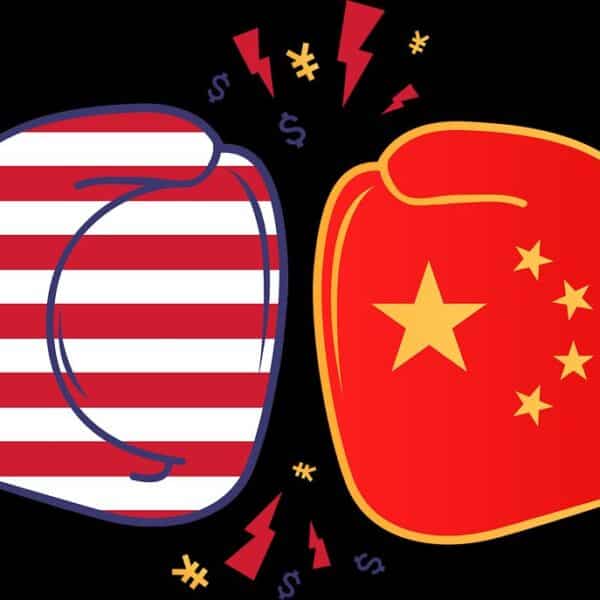By Alfred MCCOY
Empires live and die by their illusions. Visions of empowerment can inspire nations to scale the heights of global hegemony. Similarly, however, illusions of omnipotence can send fading empires crashing into oblivion. So it was with Great Britain in the 1950s and so it may be with the United States today.
By 1956, Britain had exploited its global empire shamelessly for a decade in an effort to lift its domestic economy out of the rubble of World War II. It was looking forward to doing so for many decades to come. Then an obscure Egyptian army colonel named Gamal Abdel Nasser seized the Suez Canal and Britain’s establishment erupted in a paroxysm of racist outrage. The prime minister of the day, Sir Antony Eden, forged an alliance with France and Israel to send six aircraft carriers to the Suez area, smash Egypt’s tank force in the Sinai desert, and sweep its air force from the skies.
But Nasser grasped the deeper geopolitics of empire in a way that British leaders had long forgotten. The Suez Canal was the strategic hinge that tied Britain to its Asian empire — to British Petroleum’s oil fields in the Persian Gulf and the sea lanes to Singapore and beyond. So, in a geopolitical masterstroke, he simply filled a few rusting freighters with rocks and sank them at the entrance to the canal, snapping that hinge in a single gesture. After Eden was forced to withdraw British forces in a humiliating defeat, the once-mighty British pound trembled at the precipice of collapse and, overnight, the sense of imperial power in England seemed to vanish like a desert mirage.
Two Decades of Delusions
In a similar manner, Washington’s hubris is finding its nemesis in China’s President Xi Jinping and his grand strategy for uniting Eurasia into the world’s largest economic bloc. For two decades, as China climbed, step by step, toward global eminence, Washington’s inside-the-Beltway power elite was blinded by its overarching dreams of eternal military omnipotence. In the process, from Bill Clinton’s administration to Joe Biden’s, Washington’s China policy has morphed from illusion directly into a state of bipartisan delusion.
Back in 2000, the Clinton administration believed that, if admitted to the World Trade Organization, Beijing would play the global game strictly by Washington’s rules. When China started playing imperial hardball instead — stealing patents, forcing companies to turn over trade secrets, and manipulating its currency to increase its exports — the elite journal Foreign Affairs tut-tutted that such charges had “little merit,” urging Washington to avoid “an all-out trade war” by learning to “respect difference and look for common ground.”
Within just three years, a flood of exports produced by China’s low-wage workforce, drawn from 20% of the world’s population, began shutting down factories across America. The AFL-CIO labor confederation then started accusing Beijing of illegally “dumping” its goods in the U.S. at below-market prices. The administration of George W. Bush, however, dismissed the charges for lack of “conclusive evidence,” allowing Beijing’s export juggernaut to grind on unimpeded.
For the most part, the Bush-Cheney White House simply ignored China, instead invading Iraq in 2003, launching a strategy that was supposed to give the U.S. lasting dominion over the Middle East’s vast oil reserves. By the time Washington withdrew from Baghdad in 2011, having wasted up to $5.4 trillion on the misbegotten invasion and occupation of that country, fracking had left America on the edge of energy independence, while oil was joining cordwood and coal as a fuel whose days were numbered, potentially rendering the future Middle East geopolitically irrelevant.
While Washington had been pouring blood and treasure into desert sands, Beijing was making itself into the world’s workshop. It had amassed $4 trillion in foreign exchange, which it began investing in an ambitious scheme it called the Belt and Road Initiative to unify Eurasia via history’s largest set of infrastructure projects. Hoping to counter that move with a bold geopolitical gambit, President Barack Obama tried to check China with a new strategy that he called a “pivot to Asia.” It was to entail a global military shift of U.S. forces to the Pacific and a drawing of Eurasia’s commerce toward America through a new set of trade pacts. The scheme, brilliant in the abstract, soon crashed head-first into some harsh realities. As a start, extricating the U.S. military from the mess it had made in the Greater Middle East proved far harder than imagined. Meanwhile, getting big global trade treaties approved as anti-globalization populism surged across America — fueled by factory closures and stagnant wages — turned out, in the end, to be impossible.
Even President Obama underestimated the seriousness of China’s sustained challenge to this country’s global power. “Across the ideological spectrum, we in the U.S. foreign policy community,” two senior Obama officials would later write, “shared the underlying belief that U.S. power and hegemony could readily mold China to the United States’ liking… All sides of the policy debate erred.”
Breaking with the Beltway consensus about China, Donald Trump would spend two years of his presidency fighting a trade war, thinking he could use America’s economic power — in the end, just a few tariffs — to bring Beijing to its knees. Despite his administration’s incredibly erratic foreign policy, its recognition of China’s challenge would prove surprisingly consistent. Trump’s former national security adviser H.R. McMaster would, for instance, observe that Washington had empowered “a nation whose leaders were determined not only to displace the United States in Asia, but also to promote a rival economic and governance model globally.” Similarly, Trump’s State Department warned that Beijing harbored “hegemonic ambitions” aimed at “displacing the United States as the world’s foremost power.”
In the end, however, Trump would capitulate. By January 2020, his trade war would have devastated this country’s agricultural exports, while inflicting heavy losses on its commercial supply chain, forcing the White House to rescind some of those punitive tariffs in exchange for Beijing’s unenforceable promises to purchase more American goods. Despite a celebratory White House signing ceremony, that deal represented little more than a surrender.
Joe Biden’s Imperial Illusions
Even now, after these 20 years of bipartisan failure, Washington’s imperial illusions persist. The Biden administration and its inside-the-Beltway foreign-policy experts seem to think that China is a problem like Covid-19 that can be managed simply by being the un-Trump. Last December, a pair of professors writing in the establishment journal Foreign Affairs typically opined that “America may one day look back on China the way they now view the Soviet Union,” that is, “as a dangerous rival whose evident strengths concealed stagnation and vulnerability.”
Sure, China might be surpassing this country in multiple economic metrics and building up its military power, said Ryan Hass, the former China director in Obama’s National Security Council, but it is not 10 feet tall. China’s population, he pointed out, is aging, its debt ballooning, and its politics “increasingly sclerotic.” In the event of conflict, China is geopolitically “vulnerable when it comes to food and energy security,” since its navy is unable to prevent it “from being cut off from vital supplies.”
In the months before the 2020 presidential election, a former official in Obama’s State Department, Jake Sullivan, began auditioning for appointment as Biden’s national security adviser by staking out a similar position. In Foreign Affairs, he argued that China might be “more formidable economically… than the Soviet Union ever was,” but Washington could still achieve “a steady state of… coexistence on terms favorable to U.S. interests and values.” Although China was clearly trying “to establish itself as the world’s leading power,” he added, America “still has the ability to more than hold its own in that competition,” just as long as it avoids Trump’s “trajectory of self-sabotage.”
As expected from such a skilled courtier, Sullivan’s views coincided carefully with those of his future boss, Joe Biden. In his main foreign policy manifesto for the 2020 presidential campaign, candidate Biden argued that “to win the competition for the future against China,” the U.S. had to “sharpen its innovative edge and unite the economic might of democracies around the world.”
All these men are veteran foreign policy professionals with a wealth of international experience. Yet they seem oblivious to the geopolitical foundations for global power that Xi Jinping, like Nasser before him, seemed to grasp so intuitively. Like the British establishment of the 1950s, these American leaders have been on top of the world for so long that they’ve forgotten how they got there.
In the aftermath of World War II, America’s Cold War leaders had a clear understanding that their global power, like Britain’s before it, would depend on control over Eurasia. For the previous 400 years, every would-be global hegemon had struggled to dominate that vast land mass. In the sixteenth century, Portugal had dotted continental coastlines with 50 fortified ports (feitorias) stretching from Lisbon to the Straits of Malacca (which connect the Indian Ocean to the Pacific), just as, in the late nineteenth century, Great Britain would rule the waves through naval bastions that stretched from Scapa Flow, Scotland, to Singapore.
While Portugal’s strategy, as recorded in royal decrees, was focused on controlling maritime choke points, Britain benefitted from the systematic study of geopolitics by the geographer Sir Halford Mackinder, who argued that the key to global power was control over Eurasia and, more broadly, a tri-continental “world island” comprised of Asia, Europe, and Africa. As strong as those empires were in their day, no imperial power fully perfected its global reach by capturing both axial ends of Eurasia — until America came on the scene.
The Cold War Struggle for Control over Eurasia
During its first decade as the globe’s great hegemon at the close of World War II, Washington quite self-consciously set out to build an apparatus of awesome military power that would allow it to dominate the sprawling Eurasian land mass. With each passing decade, layer upon layer of weaponry and an ever-growing network of military bastions were combined to “contain” communism behind a 5,000-mile Iron Curtain that arched across Eurasia, from the Berlin Wall to the Demilitarized Zone near Seoul, South Korea.
Through its post-World War II occupation of the defeated Axis powers, Germany and Japan, Washington seized military bases, large and small, at both ends of Eurasia. In Japan, for example, its military would occupy approximately 100 installations from Misawa air base in the far north to Sasebo naval base in the south.
Soon after, as Washington reeled from the twin shocks of a communist victory in China and the start of the Korean war in June 1950, the National Security Council adopted NSC-68, a memorandum making it clear that control of Eurasia would be the key to its global power struggle against communism. “Soviet efforts are now directed toward the domination of the Eurasian land mass,” read that foundational document. The U.S., it insisted, must expand its military yet again “to deter, if possible, Soviet expansion, and to defeat, if necessary, aggressive Soviet or Soviet-directed actions.”
As the Pentagon’s budget quadrupled from $13.5 billion to $48.2 billion in the early 1950s in pursuit of that strategic mission, Washington quickly built a chain of 500 military installations ringing that landmass, from the massive Ramstein air base in West Germany to vast, sprawling naval bases at Subic Bay in the Philippines and Yokosuka, Japan.
Such bases were the visible manifestation of a chain of mutual defense pacts organized across the breadth of Eurasia, from the North Atlantic Treaty Organization (NATO) in Europe to a security treaty, ANZUS, involving Australia, New Zealand, and the U.S. in the South Pacific. Along the strategic island chain facing Asia known as the Pacific littoral, Washington quickly cemented its position through bilateral defense pacts with Japan, South Korea, the Philippines, and Australia.
Along the Iron Curtain running through the heart of Europe, 25 active-duty NATO divisions faced 150 Soviet-led Warsaw Pact divisions, both backed by armadas of artillery, tanks, strategic bombers, and nuclear-armed missiles. To patrol the Eurasian continent’s sprawling coastline, Washington mobilized massive naval armadas stiffened by nuclear-armed submarines and aircraft carriers — the 6th Fleet in the Mediterranean and the massive 7th Fleet in the Indian Ocean and the Pacific.
For the next 40 years, Washington’s secret Cold War weapon, the Central Intelligence Agency, or CIA, fought its largest and longest covert wars around the rim of Eurasia. Probing relentlessly for vulnerabilities of any sort in the Sino-Soviet bloc, the CIA mounted a series of small invasions of Tibet and southwest China in the early 1950s; fought a secret war in Laos, mobilizing a 30,000-strong militia of local Hmong villagers during the 1960s; and launched a massive, multibillion dollar covert war against the Red Army in Afghanistan in the 1980s.
During those same four decades, America’s only hot wars were similarly fought at the edge of Eurasia, seeking to contain the expansion of Communist China. On the Korean Peninsula from 1950 to 1953, almost 40,000 Americans (and untold numbers of Koreans) died in Washington’s effort to block the advance of North Korean and Chinese forces across the 38th parallel. In Southeast Asia from 1962 to 1975, some 58,000 American troops (and millions of Vietnamese, Laotians, and Cambodians) died in an unsuccessful attempt to stop the expansion of communists south of the 17th parallel that divided North and South Vietnam.
By the time the Soviet Union imploded in 1990 (just as China was turning into a Communist Party-run capitalist power), the U.S. military had become a global behemoth standing astride the Eurasian continent with more than 700 overseas bases, an air force of 1,763 jet fighters, more than 1,000 ballistic missiles, and a navy of nearly 600 ships, including 15 nuclear carrier battle groups — all linked together by a global system of satellites for communication, navigation, and espionage.
Despite its name, the Global War on Terror after 2001 was actually fought, like the Cold War before it, at the edge of Eurasia. Apart from the invasions of Afghanistan and Iraq, the Air Force and CIA had, within a decade, ringed the southern rim of that landmass with a network of 60 bases for its growing arsenal of Reaper and Predator drones, stretching all the way from the Sigonella Naval Air Station in Sicily to Andersen Air Force Base on the island of Guam. And yet, in that series of failed, never-ending conflicts, the old military formula for “containing,” constraining, and dominating Eurasia was visibly failing. The Global War on Terror proved, in some sense, a long-drawn-out version of Britain’s imperial Suez disaster.
China’s Eurasian Strategy
After all that, it seems remarkable that Washington’s current generation of foreign policy leaders, like Britain’s in the 1950s, is so blindingly oblivious to the geopolitics of empire — in this case, to Beijing’s largely economic bid for global power on that same “world island” (Eurasia plus an adjoining Africa).
It’s not as if China has been hiding some secret strategy. In a 2013 speech at Kazakhstan’s Nazarbayev University, President Xi typically urged the peoples of Central Asia to join with his country to “forge closer economic ties, deepen cooperation, and expand development space in the Eurasian region.” Through trade and infrastructure “connecting the Pacific and the Baltic Sea,” this vast landmass inhabited by close to three billion people could, he said, become “the biggest market in the world with unparalleled potential.”
This development scheme, soon to be dubbed the Belt and Road Initiative, would become a massive effort to economically integrate that “world island” of Africa, Asia, and Europe by investing well more than a trillion dollars — a sum 10 times larger than the famed U.S. Marshall plan that rebuilt a ravaged Europe after World War II. Beijing also established the Asian Infrastructure Investment Bank with an impressive $100 billion in capital and 103 member nations. More recently, China has formed the world’s largest trade bloc with 14 Asia-Pacific partners and, over Washington’s strenuous objections, signed an ambitious financial services agreement with the European Union.
Such investments, almost none of a military nature, quickly fostered the formation of a transcontinental grid of railroads and gas pipelines extending from East Asia to Europe, the Pacific to the Atlantic, all linked to Beijing. In a striking parallel with that sixteenth century chain of 50 fortified Portuguese ports, Beijing has also acquired special access through loans and leases to more than 40 seaports encompassing its own latter-day “world island” — from the Straits of Malacca, across the Indian Ocean, around Africa, and along Europe’s extended coastline from Piraeus, Greece, to Zeebrugge, Belgium.
With its growing wealth, China also built a blue-water navy that, by 2020, already had 360 warships, backed by land-based missiles, jet fighters, and the planet’s second global system of military satellites. That growing force was meant to be the tip of China’s spear aimed at puncturing Washington’s encirclement of Asia. To cut the chain of American installations along the Pacific littoral, Beijing has built eight military bases on tiny (often dredged) islands in the South China Sea and imposed an air defense zone over a portion of the East China Sea. It has also challenged the U.S. Navy’s long-standing dominion over the Indian Ocean by opening its first foreign base at Djibouti in East Africa and building modern ports at Gwadar, Pakistan, and Hambantota, Sri Lanka, with potential military applications.
By now, the inherent strength of Beijing’s geopolitical strategy should be obvious to Washington foreign policy experts, were their insights not clouded by imperial hubris. Ignoring the unbending geopolitics of global power, centered as always on Eurasia, those Washington insiders now coming to power in the Biden administration somehow imagine that there is still a fight to be fought, a competition to be waged, a race to be run. Yet, as with the British in the 1950s, that ship may well have sailed.
By grasping the geopolitical logic of unifying Eurasia’s vast landmass — home to 70% of the world’s population — through transcontinental infrastructures for commerce, energy, finance, and transport, Beijing has rendered Washington’s encircling armadas of aircraft and warships redundant, even irrelevant.
As Sir Halford Mackinder might have put it, had he lived to celebrate his 160th birthday last month, the U.S. dominated Eurasia and thereby the world for 70 years. Now, China is taking control of that strategic continent and global power will surely follow.
However, it will do so on anything but the recognizable planet of the last 400 years. Sooner or later, Washington will undoubtedly have to accept the unbending geopolitical reality that undergirds the latest shift in global power and adapt its foreign policy and fiscal priorities accordingly.
This current version of the Suez syndrome is, nonetheless, anything but the usual. Thanks to longterm imperial development based on fossil fuels, planet Earth itself is now changing in ways dangerous to any power, no matter how imperial or ascendant. So, sooner or later, both Washington and Beijing will have to recognize that we are now in a distinctly dangerous new world where, in the decades to come, without some kind of coordination and global cooperation to curtail climate change, old imperial truths of any sort are likely to be left in the attic of history in a house coming down around all our ears.






